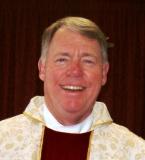Acts 16: 9–15 / Psalm 67 / Revelation 21: 10; 22 – 22: 5 / John 14: 23–29
This
is the homily given at Flohr’s Evangelical Lutheran Church (ELCA) in
McKnightstown, Pennsylvania on Sunday, May 25, 2025 by Fr. Gene Tucker, Interim
Pastor.
“REMINDERS”
(Homily text: John 14: 23–29)
Reminders.
They are everywhere, and they assist us
to make our way, day-by-day, through life, enabling us not to forget the things
we ought to do, the stuff we need to take with us, and the values we cherish
which shape and mold us into the persons we should be.
So, for example, a reminder might be
that object that we put on the floor just inside the door, so that when we
leave, we will have to walk over it to get where we’re going (one of my
favorite tricks, by the way, and quite effective!). Another example might be
that photo on the wall of someone who’s been influential in our lives at some
point or another. Still another example might be an object, given as a gift by
someone who’s role in our lives manages to cast a favorable shadow over us
today. One more example might suffice to illustrate the point: That person who
writes on their hands in ball point ink the things they hope to do or to
remember during the day. (When asked about this practice, and when told that
there is paper for such things, the individual said that, yes, there is paper
upon which to write a list of the tasks for the day, but then they manage to
misplace or lose the paper, thereby also losing the “to-do” list.)
In our Gospel text, appointed for this
day, our Lord Jesus Christ tells His disciples that He will - once He has returned
to the Father - send the Holy Spirit, the Advocate, who will lead them into all
truth, and will remind them of all that He has taught them.
(Before we dig into this a bit, let’s
recall that this portion of John’s Gospel account recalls and relates those
things that the Lord said and did during the Last Supper.[1] We
would also do well to remember that – in John’s account – the Holy Spirit is
addressed as “Advocate”, a term that carries with it a legal association, much
like an attorney would who stands alongside a client in a courtroom.)
Let’s notice the two points that the
Lord makes about the work and the role of the Spirit: We might begin by
noticing that the Lord says that this Advocate will lead us into all truth.
This is the truth that comes from the
Father, and which has been given to the Son. (Recall our Lord’s statement in
John 10:30, “I and the Father are one”.)
The second thing to notice is that the
Lord tells those original Twelve, He will be going away. But, He says, the Holy
Spirit will be the transmitter and the maintainer of truth. That same Spirit
will remind those original Twelve of the things that the Lord had told them
during the time of His earthly sojourn.
The repository of what the Lord had
said and done – for us as Christian believers today – is Holy Scripture, the
Bible.
A question arises: Do we think of Holy
Scripture as a set of reminders?
It is, of course. In its pages are the
accounts of what Jesus said and did during the time of His ministry. Also in
its pages are the accounts of the successes and the failures of the heroes of
Scripture. Yes, it’s all there: The Good, the Bad and the Ugly. Truth-telling,
to be sure, and one reason to trust the voice of Scripture, for it lays bare
the ways in which the ones whom God had chosen to do His will over time didn’t
make the grade. There’s no whitewashing the deeds and the lives of the saints. Most
of them (though not all) have mistakes – sometimes really bad ones – in the
record of their lives and their walk with God.
Those missteps are reminders for us
today, saying (in effect): Learn from the experience of so-and-so.
The lives of the saints (and here, I
think of those saints we would address with a capital “S”, Saint Peter, Saint
Paul, and so forth) are reminders. Their faithfulness ensures that we are, to
some degree or another, their spiritual offspring.
Those in the Church with whom we
associate and with whom we worship Sunday-by-Sunday and with whom we serve are
reminders. We see in others how God is moving and working in their lives. Those
successes (and yes, the shortcomings, too) are reminders of God’s will and
God’s ways.
One final point might be worth
mentioning: As the Church moves forward into the years which lie ahead, it
would be easy for it to forget those essentials of the faith upon which it was
founded. It’d be easy to wander off into this cause or that one, to set up
idols (defined as anything that takes God’s rightful and central place in our
devotion and attention) of any number of worthwhile endeavors. To avoid this
misstep, reminders, such as those that Holy Scripture and the assistance of the
Holy Spirit, are vital.
AMEN.
[1] In John’s account, chapters thirteen through seventeen
